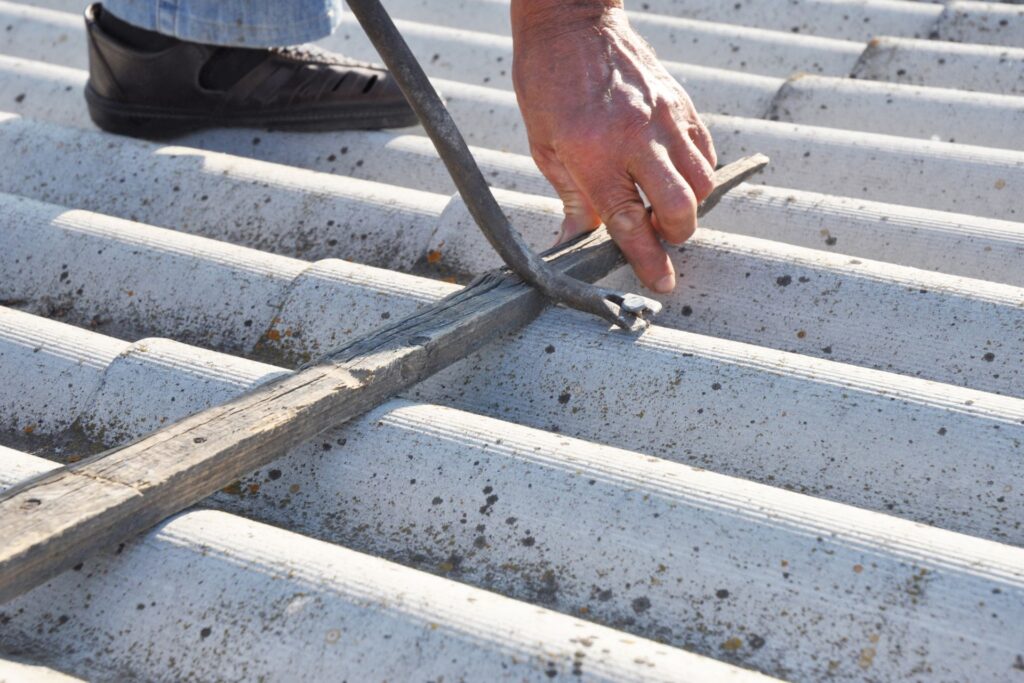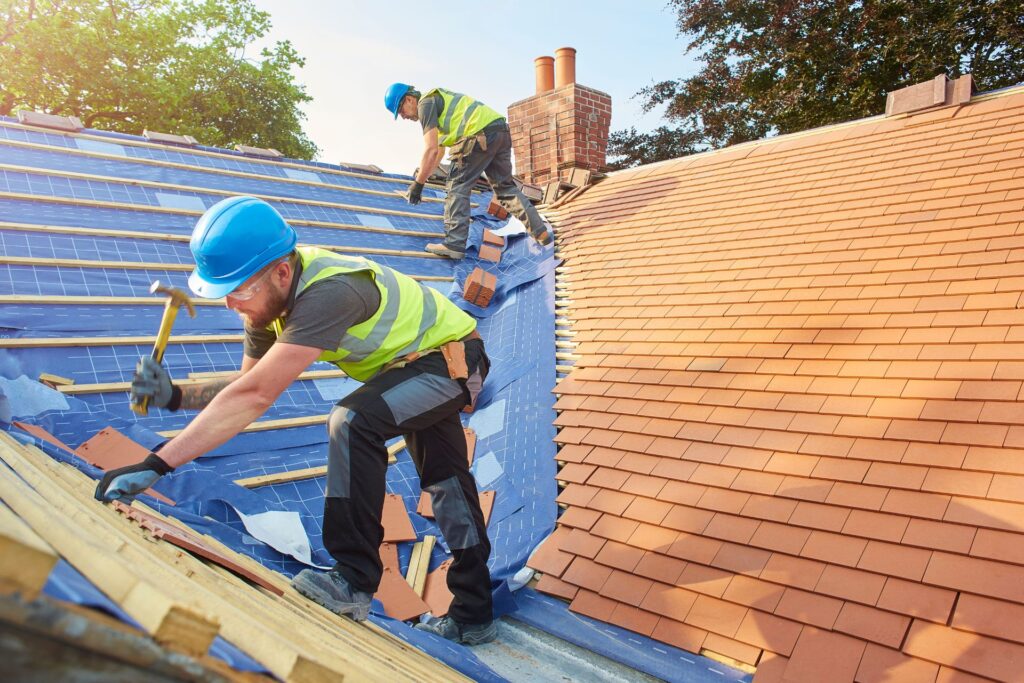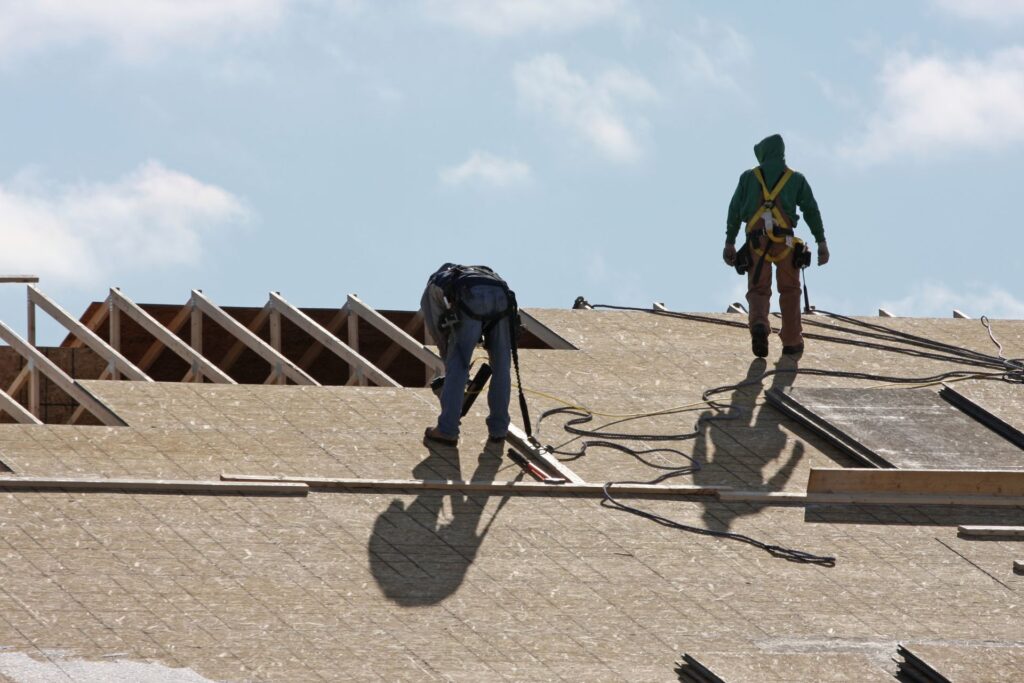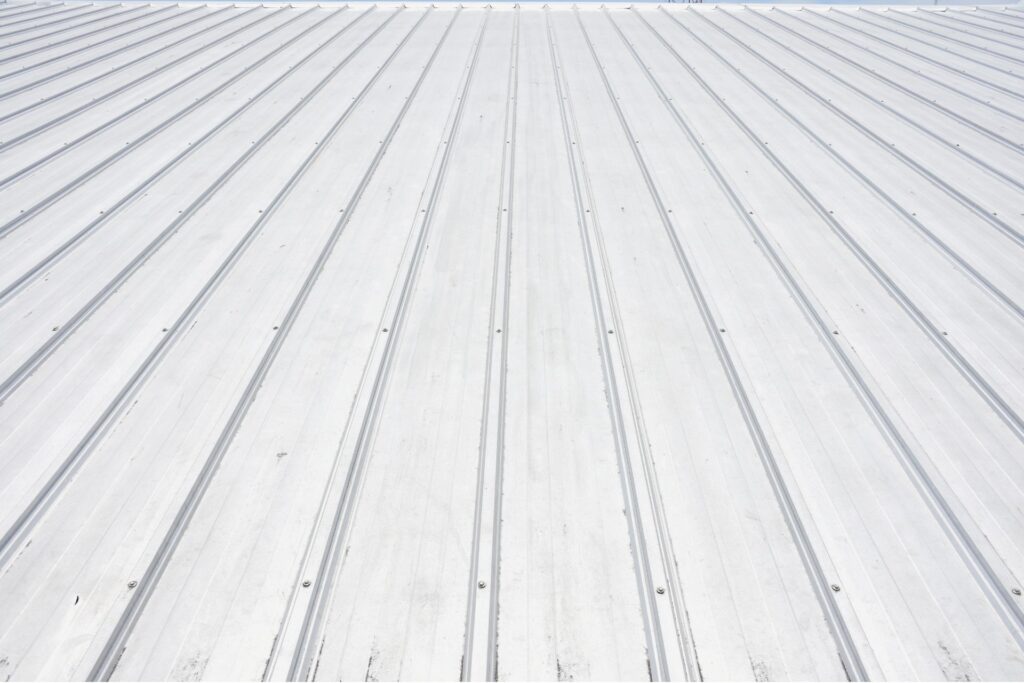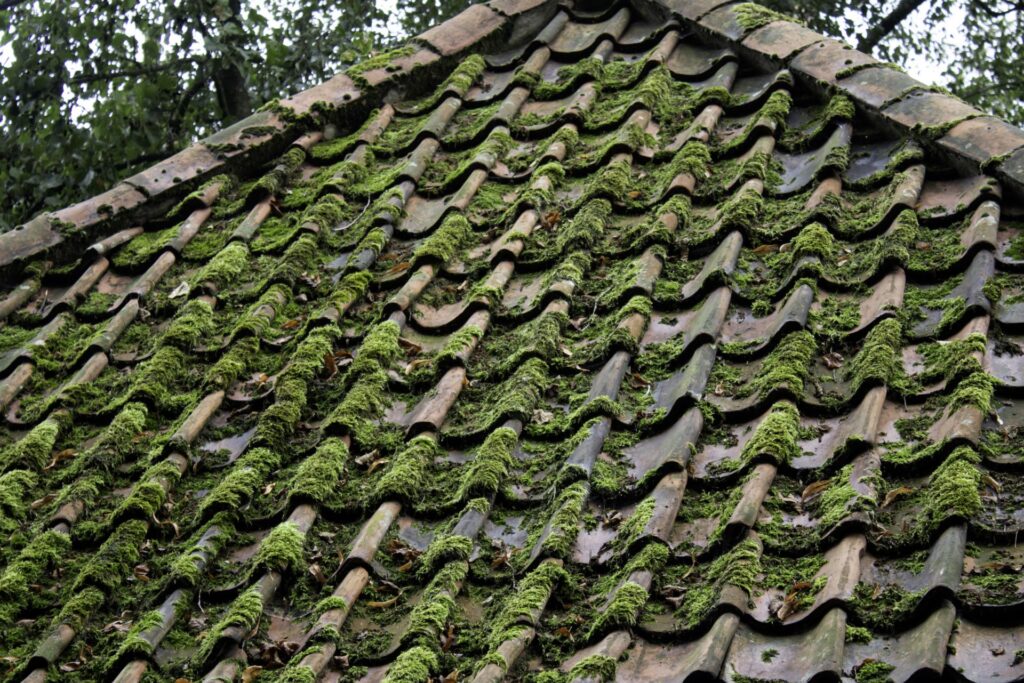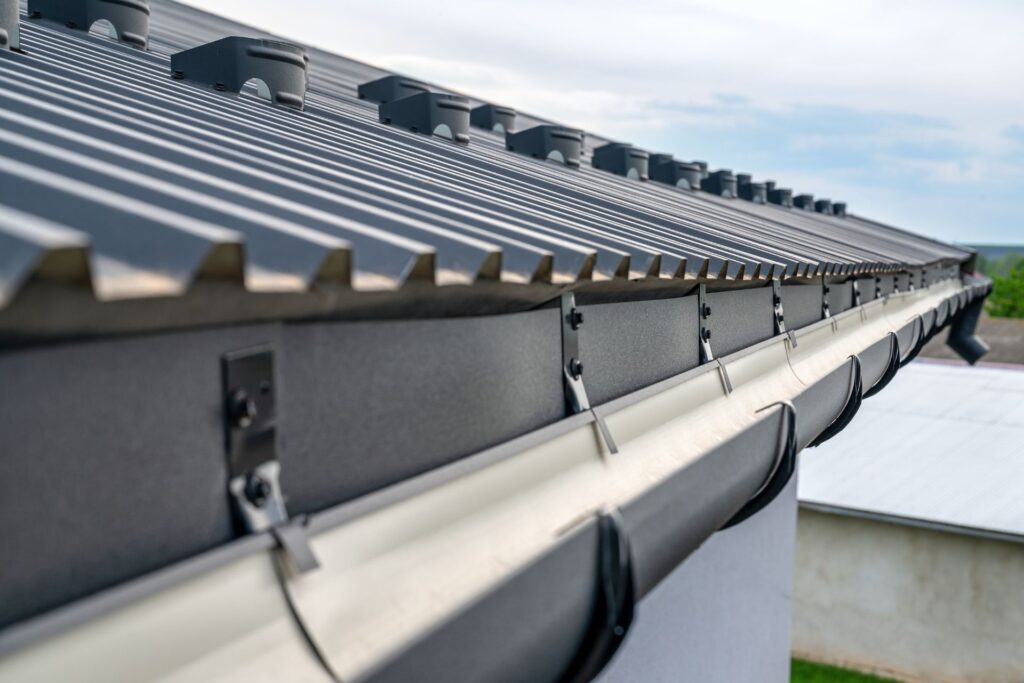Ultimate Guide To Asbestos Roof Removal Cost Per Square Meter NZ
Welcome to our comprehensive guide on understanding the cost of asbestos roof removal per square meter in New Zealand. Once a popular building material for its durability and heat resistance, asbestos now poses significant health risks, making its safe removal a priority for homeowners and property managers. This post delves into the costs involved in asbestos roof removal, aiming to provide clarity and confidence for your project planning. We cover the process from identifying asbestos in your roofing to choosing the right removal service and navigating the regulatory environment, ensuring you’re well-informed about procedures, safety measures, and financial implications. Our goal is to equip you with the necessary knowledge to tackle this challenge, ensuring your property is safe and complies with New Zealand’s health and safety standards. Let’s embark on this journey together, prioritizing the well-being of our homes and loved ones.
The cost of asbestos roof removal in New Zealand typically ranges between NZ$50 to NZ$200 per square meter. This price variation depends on factors such as roof size and accessibility, the type of asbestos material, geographic location, and the required safety measures. A professional assessment is crucial for identifying asbestos in roofing materials, given its associated health risks. Choosing a qualified removal service is essential, ensuring they are certified and comply with NZ’s strict asbestos removal regulations. Preparation for removal includes ensuring easy roof access and considering safety guidelines for residents. Post-removal, proper disposal of asbestos materials is mandated by law to ensure environmental safety.
- What Is Asbestos And Why Is It A Concern?
- Recognizing Asbestos In Your Roof
- Understanding The Asbestos Roof Removal Process
- Factors Affecting Asbestos Roof Removal Cost In NZ
- Average Costs Of Asbestos Roof Removal Per Square Meter In NZ
- Choosing The Right Asbestos Removal Service In NZ
- Financial Assistance And Regulations
- Preparing For Asbestos Roof Removal
- After Asbestos Roof Removal – What’s Next?
- FAQs: About Asbestos Roof Removal Cost Per Square Meter NZ
What Is Asbestos And Why Is It A Concern?
Asbestos, a term that evokes caution and concern, refers to a group of naturally occurring fibrous minerals with remarkable qualities such as resistance to heat, electricity, and corrosion. These properties made asbestos an ideal material for various applications, including insulation, automotive brakes, and notably, roofing. The use of asbestos in roofing materials was widespread due to its durability and fire-resistant capabilities, offering buildings a layer of protection against the elements and potential fire hazards.
However, the very characteristics that made asbestos valuable also pose significant health risks. When asbestos-containing materials (ACMs) age or get damaged, they release fine fibers into the air. These fibers, when inhaled, can become lodged in the lungs, leading to severe respiratory issues. The health implications are profound and long-term, including asbestosis, lung cancer, and mesothelioma—a rare and aggressive form of cancer primarily associated with asbestos exposure. The latency period of these diseases can be extensive, with symptoms appearing decades after the initial exposure, making them particularly insidious.
In New Zealand, the recognition of these health hazards has led to stringent regulations on the use and removal of asbestos. Legal frameworks have been established to protect workers and the general public from asbestos exposure. The Health and Safety at Work (Asbestos) Regulations 2016 is a pivotal legislation that outlines the responsibilities of those working with asbestos, aiming to ensure safe handling, removal, and disposal practices. Environmental reasons also play a crucial role in the push for asbestos removal. Asbestos fibers can contaminate soil and water, posing a risk to ecosystems and, indirectly, human health.
The removal of asbestos in New Zealand is a regulated activity, requiring specialized training and certification. This ensures that the removal is conducted safely, minimizing the release of asbestos fibers into the environment and reducing the exposure risk to workers and the surrounding community.
Understanding the risks associated with asbestos and the reasons for its removal is crucial. It’s not just about adhering to legal obligations but protecting the health and well-being of individuals and the environment. As we move forward, the emphasis on safe practices and the push for asbestos-free environments signifies a commitment to public health and safety, echoing the global effort to mitigate the risks associated with this once-celebrated material.

Recognizing Asbestos In Your Roof
In this guide, we dive deep into the crucial task of identifying asbestos in the roofing materials of New Zealand homes. Understanding the presence of asbestos is not just about safeguarding the structural integrity of your home but, more importantly, ensuring the health and safety of its inhabitants. Asbestos, once hailed for its durability and fire-resistant properties, is now known to pose severe health risks, making its identification in homes, particularly in the roof, paramount.
Identifying Asbestos Roofing Materials in New Zealand Homes
The journey to recognizing asbestos within your home’s roof begins with a thorough understanding of the common types of roofing materials used in New Zealand’s older buildings. Asbestos-containing materials (ACMs) were extensively used in roofing products before the 1980s due to their strong resistance to heat, fire, and corrosion. These materials range from roofing shingles and tiles to felt and underlay. If your home dates back to this period or earlier, there’s a heightened chance it might contain asbestos in the roofing.
When to Suspect Your Roof Contains Asbestos
Age of the Building: Homes constructed or renovated before the late 1980s are more likely to contain asbestos materials. The ban on asbestos didn’t fully come into effect until the early 2000s in New Zealand, so understanding the timeline of your home’s construction or renovation is vital.
Roofing Materials Used: Asbestos was commonly used in a variety of roofing materials, including but not limited to corrugated sheets, shingles, and tiles. These materials often have a distinct look and feel, characterized by a slightly fibrous texture and a dull, matte finish.
Deterioration Signs: Asbestos roofing materials that are breaking down or deteriorating are particularly hazardous, as they release asbestos fibers into the air. Look out for signs of wear and tear, such as cracking, fraying, or crumbling of the roofing material.
The Importance of Professional Assessment
While initial suspicion can be raised through visual inspection and knowledge of your home’s history, the definitive identification of asbestos in roofing materials requires professional assessment. This is where licensed asbestos assessors come into play. They possess the necessary expertise, equipment, and authority to take samples safely and analyze them for the presence of asbestos fibers.
Engaging professionals in asbestos assessment is not just about confirming its presence; it’s a critical step in managing the risk asbestos poses. Disturbing asbestos-containing materials without proper precautions can lead to the release of harmful fibers into the air, posing a serious health risk to anyone exposed. Professional assessors can also provide guidance on the next steps, whether it involves management, encapsulation, or removal, ensuring that any action taken is safe and compliant with local regulations.
Recognizing asbestos in your roof is a task that requires a keen eye, knowledge of your home’s history, and an understanding of the materials used in its construction. However, the definitive identification and handling of asbestos should always be left to the professionals. Taking the time to have your roof assessed for asbestos is a proactive step toward ensuring the safety and well-being of your home and its occupants. If you suspect your home may contain asbestos, don’t hesitate to reach out to a licensed asbestos assessor for a thorough examination. Your health, and that of your loved ones, is too important to leave to chance.
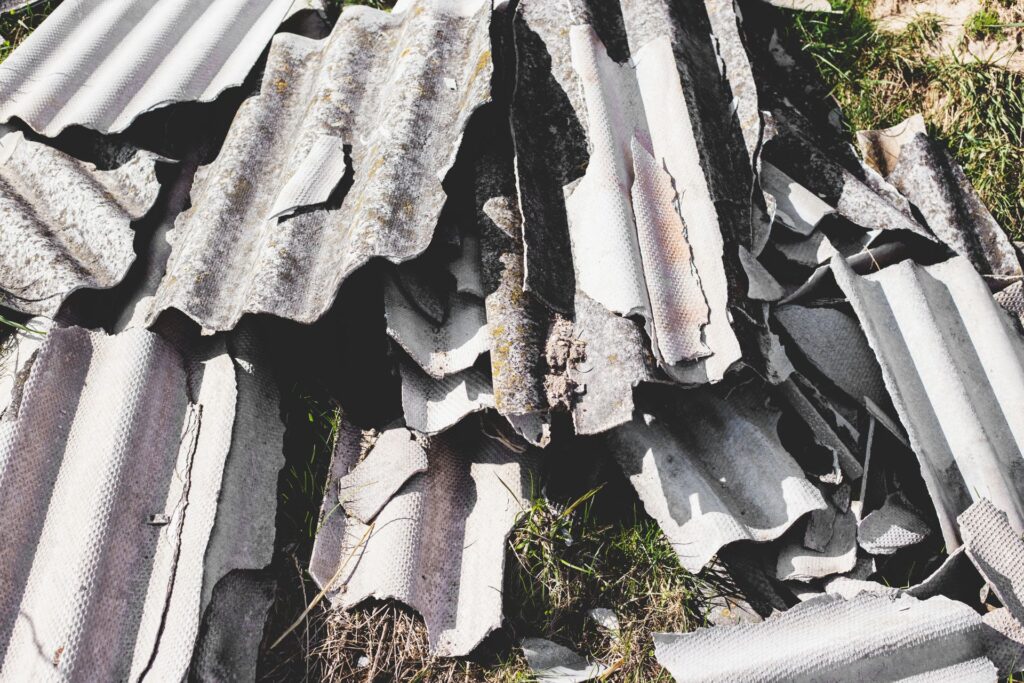
Understanding The Asbestos Roof Removal Process
Are you dealing with an asbestos roof that needs removal in New Zealand? If so, understanding the process, safety measures, and the significance of hiring certified professionals is crucial. Asbestos, once a popular building material due to its fire-resistant qualities, is now known for its health hazards, including serious lung diseases. Removing an asbestos roof is not a DIY project; it requires expertise, precision, and adherence to safety standards. This guide offers a detailed overview of the asbestos roof removal process in New Zealand, ensuring homeowners are well-informed and prepared for what to expect.
Step-By-Step Overview of the Asbestos Removal Process
Initial Assessment and Planning: Before any work begins, a certified asbestos removalist conducts a thorough inspection of your property to assess the condition of the asbestos material. This step includes determining the type of asbestos present and devising a removal plan that minimizes health risks and environmental impact.
Notification and Permits: In New Zealand, the removal of certain amounts of asbestos requires notification to the relevant local authorities. The asbestos removal company will handle this process, ensuring all legal and safety guidelines are followed.
Site Preparation: To prevent asbestos fiber contamination, the removal area is sealed off. This often involves installing plastic sheeting and warning signs to keep unauthorized individuals out.
Safety Measures: All workers wear personal protective equipment (PPE), including respirators and disposable coveralls. This equipment is essential to protect them from inhaling or ingesting asbestos fibers.
Asbestos Removal: Using specialized tools and techniques, the asbestos is carefully removed. This may involve wetting the asbestos to reduce dust formation and carefully placing the material in sealed, labeled bags for disposal.
Decontamination and Cleanup: After the asbestos is removed, the site undergoes a thorough cleanup. Surfaces are vacuumed with HEPA-filtered vacuums, and all materials used during the removal process are disposed of according to health and safety regulations.
Final Inspection and Clearance: A final inspection by an independent asbestos assessor ensures that the area is safe and free from asbestos contamination. A clearance certificate is issued, confirming the property is safe for reoccupation.
Safety Measures and Precautions
The asbestos roof removal process involves strict safety protocols to protect workers, residents, and the environment from asbestos exposure. These measures include using appropriate PPE, sealing the work area, employing dust suppression techniques, and adhering to stringent disposal procedures. Safety is the top priority, emphasizing the importance of thorough planning and professional execution.
The Role of Certified Asbestos Removal Professionals in NZ
In New Zealand, only licensed asbestos removalists can legally undertake asbestos roof removal projects. These professionals are trained to handle asbestos safely, understand the legal requirements, and have the necessary equipment to perform the job safely. Hiring a certified asbestos removal company ensures that the removal is done safely, efficiently, and in compliance with New Zealand’s health and safety regulations.
Removing an asbestos roof is a complex and hazardous process that should only be performed by certified professionals in New Zealand. Understanding the steps involved, the safety precautions necessary, and the importance of hiring the right team can make a significant difference in ensuring the safety and success of the project. Homeowners should never underestimate the risks associated with asbestos and should always opt for professional removal services to handle the task.
By following these guidelines and ensuring a professional approach to asbestos roof removal, homeowners can protect themselves, their families, and the environment from the dangers of asbestos exposure.

Factors Affecting Asbestos Roof Removal Cost In NZ
When considering the renovation or demolition of older buildings in New Zealand, asbestos roof removal becomes a significant concern due to the hazardous nature of asbestos. Homeowners, property managers, and construction professionals often find themselves navigating through the complexities of asbestos removal, including understanding the costs involved. In this detailed exploration, we’ll delve into how asbestos removal costs are calculated per square meter in NZ, the various factors that influence these costs, and the variability in prices across different regions of the country.
Calculating Asbestos Removal Costs per Square Meter
The cost of asbestos roof removal in New Zealand is typically calculated per square meter. This standardized measurement allows for a more straightforward comparison and estimation of overall costs. The calculation considers the amount of material to be removed, the labor required, safety measures, and disposal fees. It’s essential to obtain quotes from licensed asbestos removal professionals who can accurately assess the scope of work and provide a detailed breakdown of costs.
Key Factors Influencing Asbestos Removal Costs
Several critical factors can significantly influence the cost of asbestos roof removal. Understanding these factors can help homeowners and professionals better prepare for the financial aspect of the removal process.
Roof Size: The size of the roof directly impacts the cost of removal. Larger roofs require more time, labor, and materials, which increases the overall price.
Accessibility: The ease of access to the roof affects the removal cost. Roofs that are difficult to access may require additional equipment or safety measures, leading to higher costs.
Asbestos Type: There are different types of asbestos materials, each with varying degrees of hazard and difficulty in removal. Some types may require more specialized handling and disposal methods, influencing the cost.
Location: The location of the property plays a crucial role in determining the cost. Urban areas might have higher labor rates compared to rural areas. Additionally, proximity to disposal facilities can also affect the price.
Safety Requirements: New Zealand has strict safety regulations for asbestos removal. Compliance with these regulations, including protective gear, containment measures, and air monitoring, can influence the cost.
Disposal Fees: The cost of safely disposing of asbestos materials is a significant factor. Fees vary depending on the disposal facility and the amount of material to be disposed of.
Variability in Prices Across Different Regions in NZ
Asbestos removal costs in New Zealand can vary significantly from one region to another. Factors such as local labor rates, availability of asbestos removal professionals, and regional disposal fees contribute to this variability. For example, urban areas like Auckland and Wellington may have higher asbestos removal costs due to higher labor rates and more stringent disposal requirements. In contrast, rural regions might offer lower costs but could also face challenges in finding available and qualified professionals.
Understanding the factors affecting asbestos roof removal cost in New Zealand is crucial for anyone looking to undertake such a project. By considering the roof size, accessibility, asbestos type, location, safety requirements, and disposal fees, homeowners and professionals can better estimate the overall cost of removal. Additionally, being aware of the variability in prices across different regions can help in planning and budgeting for the project. Always ensure to engage with licensed professionals to ensure safety and compliance with local regulations.
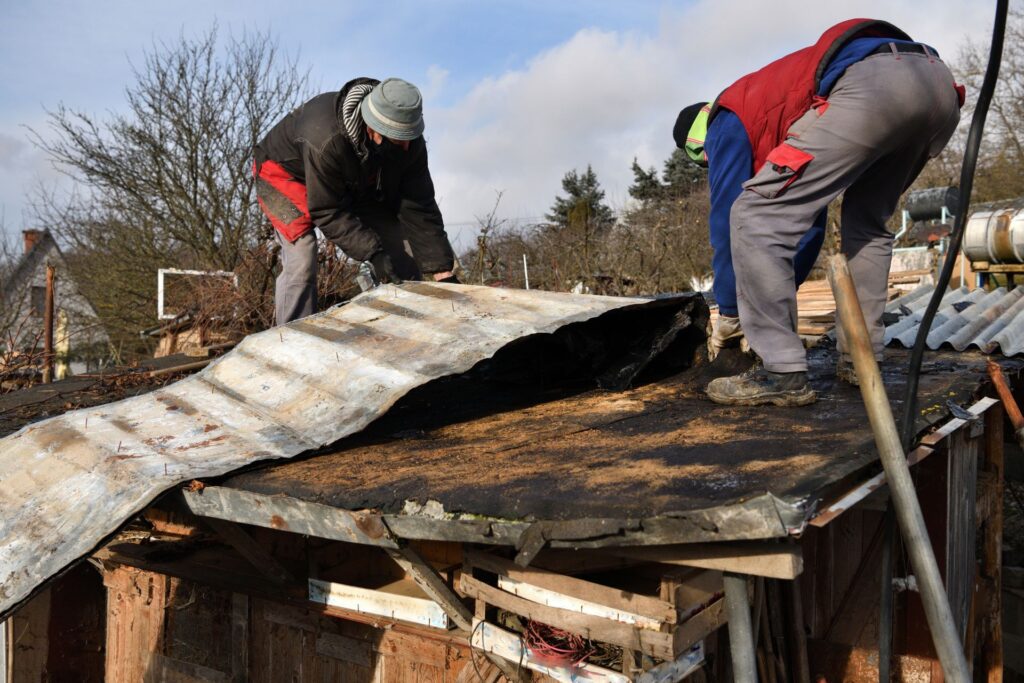
Average Costs Of Asbestos Roof Removal Per Square Meter In NZ
In recent years, the awareness around the dangers of asbestos has significantly increased. Asbestos, once a popular building material due to its heat-resistant properties, has been found to be a serious health hazard. For homeowners in New Zealand dealing with asbestos roofing, removal has become a priority to ensure the safety of their homes and families. In this article, we delve into the average costs of asbestos roof removal per square meter in NZ, offering insights through case studies, and guiding you on how to effectively budget for your asbestos roof removal project.
Current Average Cost Ranges for Asbestos Roof Removal Per Square Meter
The cost of asbestos roof removal in New Zealand can vary widely depending on several factors, including the complexity of the job, the location of the property, and the condition of the asbestos material. On average, homeowners can expect to pay anywhere from $50 to $150 per square meter for asbestos roof removal. These figures can fluctuate based on the specifics of the project, such as accessibility, the need for scaffolding, and the disposal methods required for the hazardous material.
Case Studies Illustrating Cost Variations
To better understand how costs can vary, let’s examine a couple of case studies:
Case Study 1: Small Residential Home
A small home in Auckland, measuring approximately 100 square meters, required asbestos roof removal. Due to easy access and minimal complications, the cost came to around $70 per square meter, totaling $7,000 for the complete removal.
Case Study 2: Large Commercial Building
A larger commercial building in Christchurch, with a roof area of 500 square meters, faced a more complex removal process due to its size and the presence of skylights. The cost for this project was around $120 per square meter, amounting to $60,000 for the entire roof.
These case studies highlight how project specifics significantly influence the final costs.
Budgeting for Your Asbestos Roof Removal Project
When planning for asbestos roof removal, it’s crucial to consider all potential costs to ensure an accurate budget. Here are some tips to help you budget effectively:
Get Multiple Quotes: To get a realistic idea of the costs, obtain quotes from several licensed asbestos removal specialists. This will give you a range of prices to expect and help you find the best value.
Consider Additional Costs: Aside from the removal cost per square meter, factor in any additional expenses such as asbestos testing, permits, and post-removal cleanup.
Set Aside a Contingency Fund: Unexpected issues can arise during the removal process. Setting aside an extra 10-20% of your total budget as a contingency fund can help cover any unforeseen expenses.
Explore Financial Assistance: Some local councils in New Zealand offer assistance or subsidies for asbestos removal. Research what support may be available in your area to offset some of the costs.
Asbestos roof removal is a necessary but potentially costly endeavor for New Zealand homeowners. By understanding the average costs involved and planning your budget with care, you can ensure a safe and successful removal process. Remember, the health and safety benefits of removing asbestos from your home far outweigh the financial costs. For more detailed information or to start your asbestos removal project, consult with a licensed professional in your area.
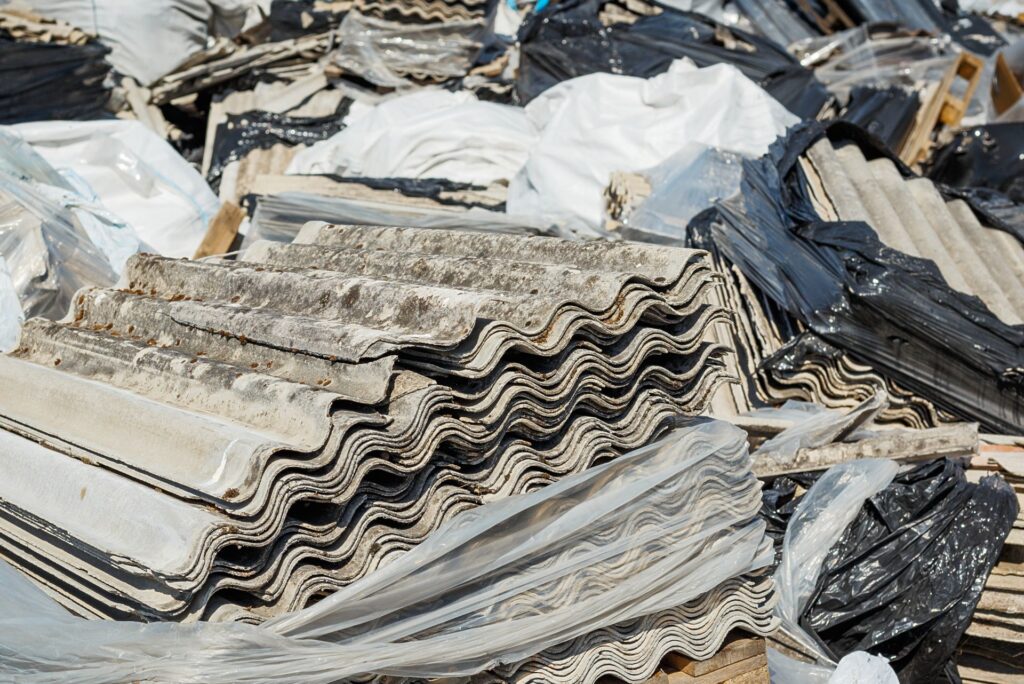
Choosing The Right Asbestos Removal Service In NZ
Choosing the right asbestos removal service in New Zealand (NZ) is a critical decision that requires careful consideration. Asbestos, once a popular building material, is now known for its health risks, including lung cancer and mesothelioma. Removing it from your property must be handled with utmost care and precision. Here’s a comprehensive guide to help you select a qualified and experienced contractor for this job. Our aim is to provide you with tips that not only ensure your safety but also optimize your search visibility, making this guide easily accessible.
Tips for Selecting a Qualified and Experienced Asbestos Removal Contractor
Research and Recommendations: Start with a thorough online search for asbestos removal services in your area. Pay attention to customer reviews and testimonials. Recommendations from friends or family who have gone through a similar process can be invaluable.
Check Experience: Look for a contractor with extensive experience in asbestos removal. The complexity of the job requires not just knowledge, but hands-on experience in handling different types of asbestos-containing materials.
Services Offered: Ensure the contractor offers a comprehensive range of services, including inspection, removal, and disposal. A one-stop shop can simplify the process for you.
What to Look for in a Service Provider
Licenses: In New Zealand, asbestos removalists must be licensed. Verify the contractor’s license with the relevant local authorities. This ensures they have met the necessary training and safety standards.
Insurance: The contractor should have liability insurance that protects you in case of any damages or accidents during the removal process.
Reviews: Online reviews and ratings can give you insight into the contractor’s reliability and quality of service. Platforms like Google My Business and local trade websites are good places to start.
Quotes: Get multiple quotes to compare prices. However, don’t make your decision based solely on cost. The quality of service and safety measures are far more important.
Questions to Ask Potential Asbestos Removal Services
1. What is your process for asbestos removal? Understanding their approach will give you confidence in their ability to handle the job safely and efficiently.
2. Can you provide references? Speaking to past clients can provide reassurance of the contractor’s reliability and quality of work.
3. How do you dispose of the asbestos? Proper disposal is crucial. Ensure they follow New Zealand’s regulations for asbestos disposal.
4. What safety measures do you take to protect your workers and clients? The contractor should follow strict safety protocols to minimize exposure risks.
5. What are the costs involved, and what do they cover? Clarify all potential costs to avoid any surprises later on.
Choosing the right asbestos removal service in NZ is not just about getting rid of a hazardous material; it’s about doing it safely, efficiently, and at a reasonable cost. By following these tips and asking the right questions, you can ensure that your property is in safe hands. Remember, the key is not to rush this decision. Take your time to research and select a contractor who meets all these criteria, ensuring a safe environment for you and your loved ones.
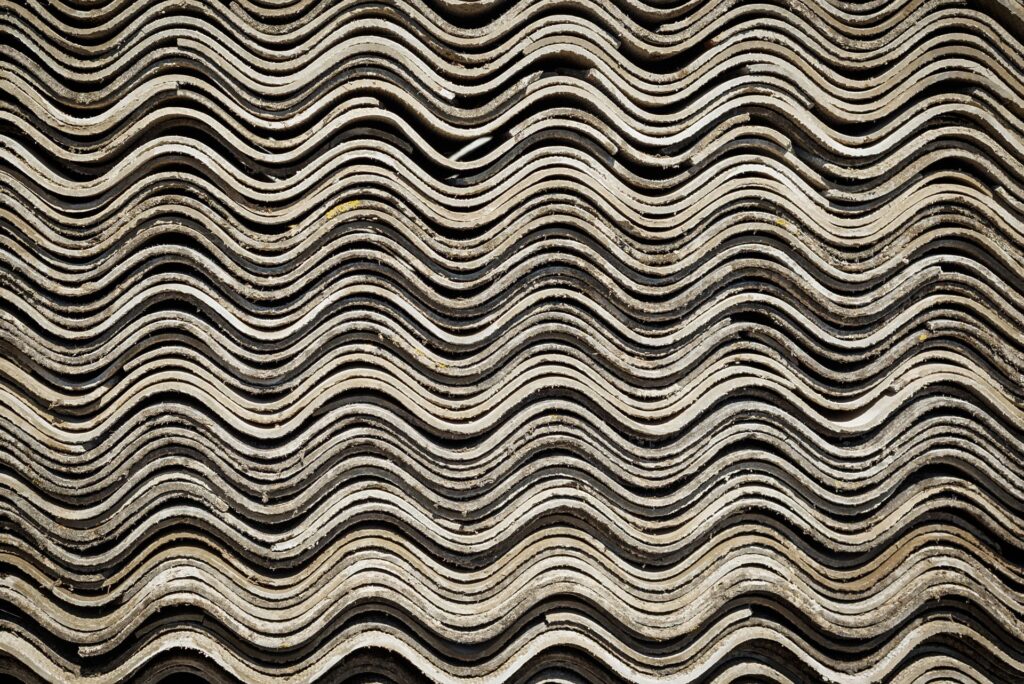
Financial Assistance And Regulations
Are you a homeowner in New Zealand facing the daunting task of asbestos removal from your property? You’re not alone. Asbestos, once a popular building material due to its durability and resistance to heat, has been found to pose significant health risks, leading to strict regulations surrounding its removal. This guide provides a comprehensive overview of New Zealand’s regulations and compliance requirements for asbestos removal, explores potential financial assistance options, and underscores the importance of adhering to local and national regulations to ensure your safety and that of your community.
Navigating New Zealand’s Asbestos Removal Regulations
New Zealand takes the health risks associated with asbestos very seriously. The government has implemented stringent regulations to manage its removal safely. Under the Health and Safety at Work (Asbestos) Regulations 2016, any work involving asbestos removal must be carried out by licensed professionals. This ensures that the removal process minimizes the release of asbestos fibers into the air, protecting workers and the public from exposure.
For homeowners, this means that if you discover asbestos in your property, it’s crucial to engage a certified asbestos removalist. These professionals are trained to handle asbestos safely, adhering to strict guidelines that include proper identification, removal, transportation, and disposal of asbestos materials.
Financial Assistance for Homeowners
The cost of asbestos removal can be a significant concern for many homeowners. However, there may be financial assistance, subsidies, or grants available to help mitigate these costs. The New Zealand government, through various local councils and environmental agencies, occasionally offers assistance programs designed to support homeowners in the safe removal of asbestos from their properties.
To explore available financial assistance options, homeowners should start by contacting their local council. They can provide up-to-date information on any grants or subsidies and guidance on the application process. Additionally, some private insurance policies may cover part of the cost of asbestos removal, so it’s worth reviewing your policy details or contacting your insurance provider for more information.
The Importance of Compliance
Complying with local and national regulations for asbestos removal is not just a legal requirement—it’s a crucial step in ensuring the health and safety of your family and your community. Improper removal of asbestos can lead to the release of harmful fibers into the air, posing a significant health risk to anyone exposed.
By adhering to the regulations and engaging licensed professionals for asbestos removal, homeowners can contribute to a safer environment. Compliance also helps avoid potential legal and financial penalties associated with non-compliance, ensuring that the removal process is conducted safely, effectively, and within the bounds of the law.
Asbestos removal is a critical issue that demands attention and adherence to strict regulations. For New Zealand homeowners, understanding these regulations, exploring available financial assistance, and ensuring compliance are essential for a safe and successful removal process. By taking these steps, you can protect your health, your property, and your community from the risks associated with asbestos exposure.
Remember, asbestos removal is not a DIY project. Engaging with professionals and following the guidelines laid out by New Zealand’s regulatory framework is the best way to manage the risks and responsibilities associated with asbestos in your home.
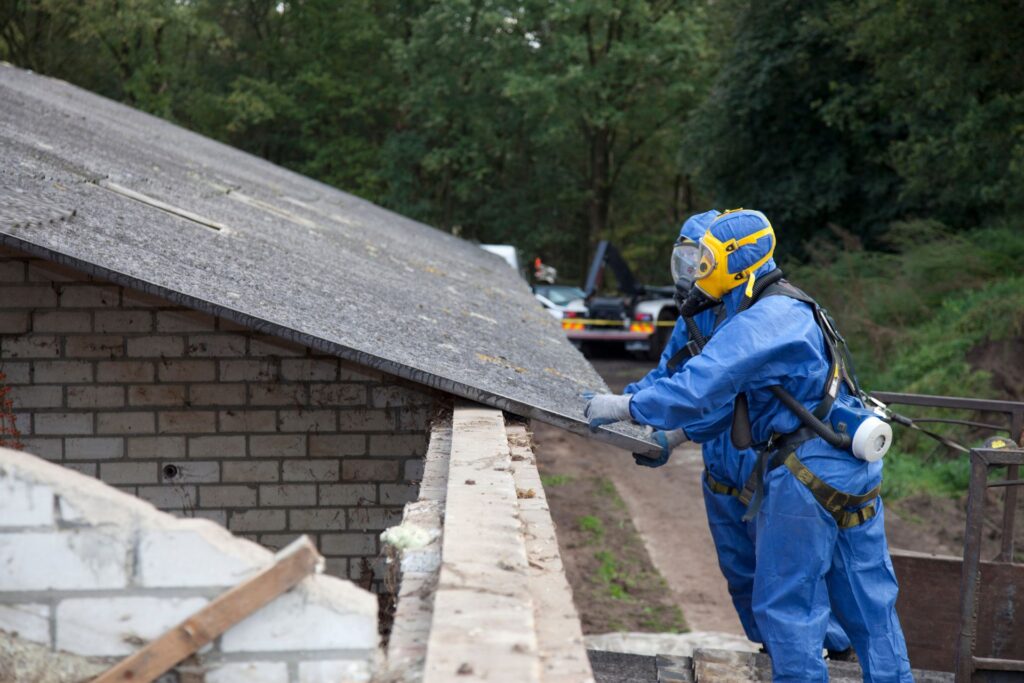
Preparing For Asbestos Roof Removal
Preparing your property for asbestos roof removal is an essential step to ensure the safety of your household and to facilitate a smooth operation. Asbestos, once a popular building material due to its fire-resistant qualities, is now known for its health hazards, including lung cancer and mesothelioma. If your home was built before the 1980s, there’s a good chance it might contain asbestos. Here’s how to adequately prepare your property for asbestos roof removal, what to expect during the project, and important safety tips and precautions for residents.
How to Prepare Your Property for the Removal Process
Hire a Professional: The first step is to engage the services of a licensed and experienced asbestos removal contractor. Asbestos removal is not a DIY project due to the health risks involved.
Notify Your Neighbors: It’s courteous and often required to inform your neighbors about the removal project, as it may affect their property or health.
Secure the Area: Ensure that the area around your home is secured and marked with clear signage indicating that asbestos removal is in progress. This is to prevent unauthorized access to the area.
Remove Outdoor Items: Clear the area of any outdoor furniture, vehicles, and garden tools to prevent asbestos fibers from clinging to them.
Seal Off the Work Area: Inside the house, close all windows, doors, and any openings that could allow asbestos fibers to enter living spaces. You may also need to cover and seal vents, air conditioning units, and heaters.
What Homeowners Should Expect During the Removal Project
Initial Inspection: The contractor will perform a thorough inspection of your property to determine the extent of asbestos and devise a removal plan.
Preparation Work: Expect the work area to be cordoned off with tape and plastic sheeting to contain asbestos fibers.
The Removal Process: Professional asbestos removers will wear protective clothing and use specialized equipment to remove the asbestos-containing materials safely.
Disposal of Asbestos Materials: The removed asbestos will be wetted down, securely bagged, and transported to an approved disposal facility.
Final Inspection and Air Monitoring: After the removal, a final inspection and air monitoring are conducted to ensure that the area is safe for reoccupation.
Safety Tips and Precautions for Residents
Stay Away from the Work Area: Residents should avoid the area where asbestos removal is taking place until it is declared safe.
Follow Safety Instructions: Adhere to any instructions or precautions given by the removal team to minimize your asbestos exposure.
Use Protective Gear: If you must enter the area, wear appropriate protective gear, such as masks and gloves, as advised by the professionals.
Health Monitoring: Be aware of the symptoms of asbestos exposure, such as coughing and shortness of breath. Consult a doctor if you experience any symptoms after the removal process.
Clean Up: After the removal, the property should be thoroughly cleaned by professionals to remove any residual asbestos fibers.
Preparing for asbestos roof removal involves understanding the risks, taking the necessary precautions to secure your property, and knowing what to expect from the process. By following these guidelines and working with certified professionals, homeowners can ensure the safe and effective removal of asbestos, protecting the health and safety of everyone involved.
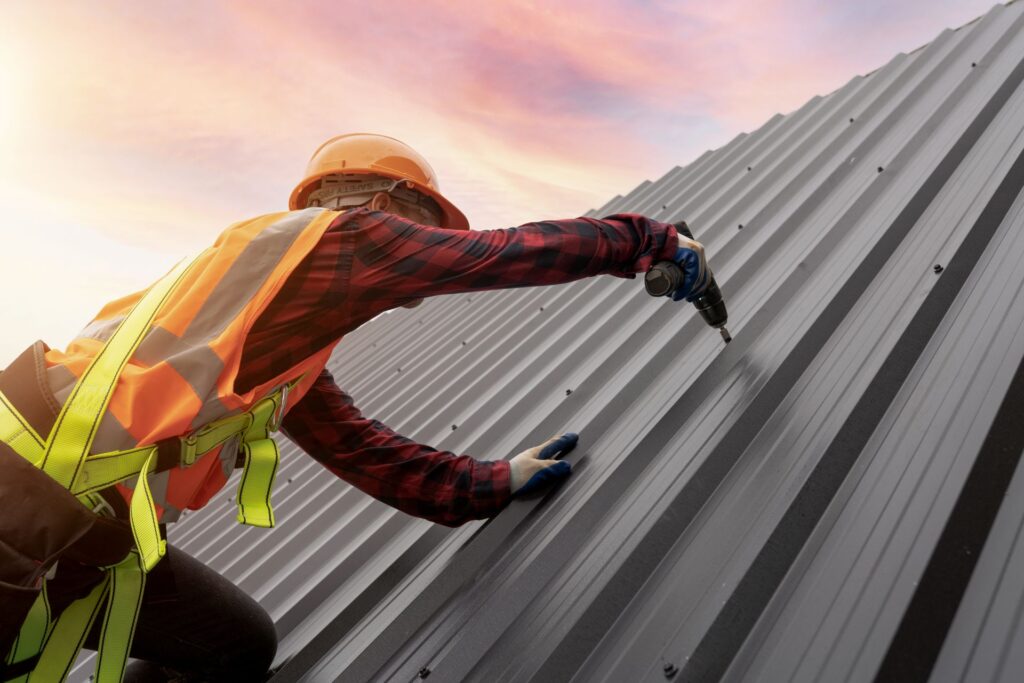
After Asbestos Roof Removal – What’s Next?
After the removal of an asbestos roof, homeowners are often faced with a critical question: What comes next? This guide delves into the essential steps you need to take following asbestos roof removal, focusing on ensuring safety, compliance with New Zealand’s regulations, and selecting the right roofing materials for your home. Our aim is to provide you with a clear, actionable plan that guarantees your property is safe, clean, and compliant with all necessary legal requirements.
Ensuring Proper Disposal of Asbestos Materials
The first step after the removal of an asbestos roof is to ensure that the hazardous materials are disposed of correctly, in line with New Zealand’s strict environmental and health regulations. Asbestos waste poses a significant health risk if not handled properly. It is imperative to engage certified professionals who are experienced in the safe disposal of asbestos materials. These professionals will ensure that the asbestos is transported and disposed of in designated hazardous waste facilities, thereby minimizing the risk to public health and the environment.
Choosing the Right Roofing Materials
Once the asbestos is safely removed and disposed of, the next step is to consider the options for your new roof. New Zealand’s diverse climate requires roofing materials that are durable, weather-resistant, and can provide adequate insulation. Some popular choices include:
Metal Roofing: Known for its durability and longevity, metal roofing is a popular choice among New Zealand homeowners. It’s resistant to extreme weather conditions and offers a modern aesthetic to your home.
Concrete Tiles: Offering a blend of durability and aesthetic appeal, concrete tiles are another excellent choice. They come in various shapes and colors, allowing homeowners to customize their roof’s appearance.
Clay Tiles: For those seeking a traditional look, clay tiles are a timeless option. While they can be more expensive than other materials, their durability and aesthetic appeal make them a worthy investment.
When selecting your roofing material, consider factors such as the architectural style of your home, the climate in your area, and your budget. Consulting with roofing experts can provide valuable insights and help you make an informed decision that meets your needs and preferences.
Ensuring Your Property Is Safe and Clean Post-Removal
The final step in the process is to ensure that your property is safe and clean after the asbestos roof removal. This involves a thorough cleanup of the site to remove any remaining asbestos fibers or debris. Professional cleaning services that specialize in post-asbestos removal can perform this task efficiently, using specialized equipment and techniques to ensure that your property is free from any contamination.
Additionally, it’s advisable to conduct air quality tests after the cleanup to ensure that the air in and around your property is safe to breathe. These tests can provide peace of mind, confirming that the asbestos removal process has been completed successfully and that your home is safe for you and your family.
Removing an asbestos roof is only the first step in ensuring your property is safe and compliant with New Zealand’s health and safety regulations. Proper disposal of asbestos materials, selecting the right roofing materials, and ensuring your property is clean and safe post-removal are essential steps that follow. By following this comprehensive guide, homeowners can navigate the process smoothly and make informed decisions that protect their health and enhance their home’s value and safety.
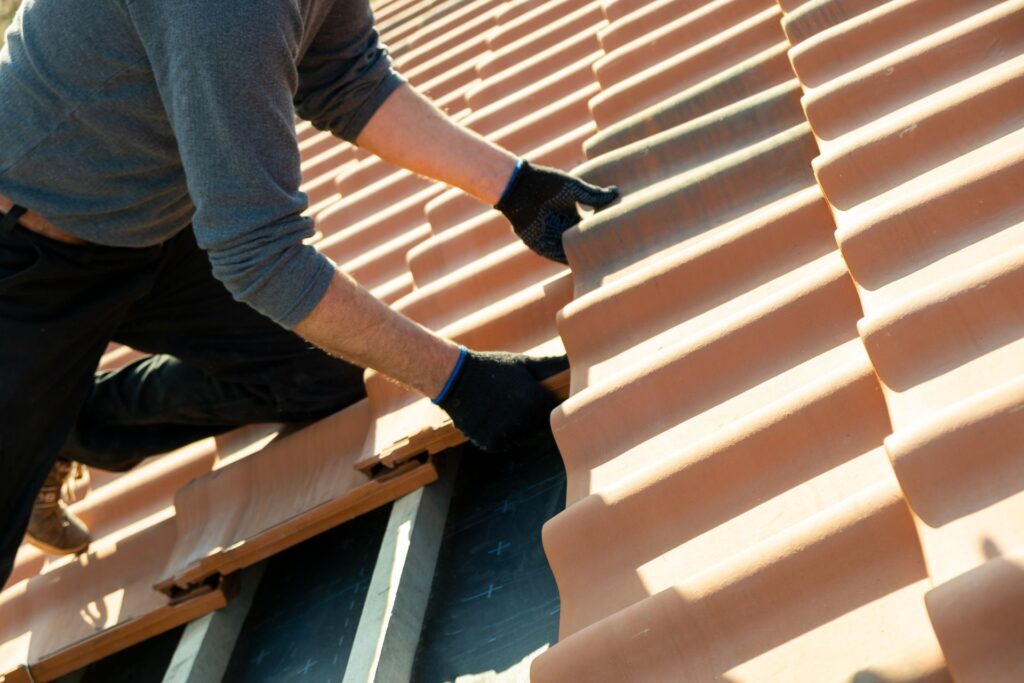
FAQs: About Asbestos Roof Removal Cost Per Square Meter NZ
What is asbestos, and why is it used in roofing?
Asbestos is a group of naturally occurring fibrous minerals that were commonly used in building materials, including roofing, due to their durability, fire resistance, and insulating properties. Its use has been significantly reduced due to health risks.
Why is asbestos removal necessary?
Asbestos fibers can be harmful when inhaled, leading to serious health conditions, including lung cancer, mesothelioma, and asbestosis. Removal is essential to prevent these health risks, especially during renovations or demolitions that disturb asbestos materials.
How can I tell if my roof contains asbestos?
Identifying asbestos in your roof often requires professional assessment, but signs include the age of your building (asbestos was widely used before the 1980s) and the appearance of roofing materials, which may have a fibrous, corrugated texture.
What factors affect the cost of asbestos roof removal in NZ?
Several factors influence the cost, including the size and accessibility of your roof, the type of asbestos material, geographic location, safety requirements, and disposal fees.
What is the average cost of asbestos roof removal per square meter in NZ?
Costs can vary widely, but as a general guide, prices range from NZ$50 to NZ$200 per square meter, depending on various factors, including those mentioned previously.
How do I choose a qualified asbestos removal service?
Look for services with certified professionals, a good track record, insurance, and clear, detailed quotes. Ask about their safety procedures and whether they follow national regulations for asbestos removal.
Are there regulations in NZ regarding asbestos removal?
Yes, New Zealand has strict regulations governing asbestos removal, including licensing for removalists and disposal requirements to ensure public and environmental safety.
Can I receive financial assistance for asbestos roof removal in NZ?
Financial assistance options vary, including local government grants or subsidies for property upgrades. It’s best to research or inquire with local authorities about available support.
What should I do to prepare for asbestos roof removal?
Ensure clear access to the roof for professionals, consider temporary relocation if recommended for safety, and follow the advice of your asbestos removal service for specific preparations.
What happens after the asbestos roof is removed?
The removed asbestos material must be disposed of according to NZ regulations. You may then proceed with replacing your roof, choosing new materials that are safe, durable, and compliant with current building standards.
Conclusion
Wrapping up our discussion on asbestos roof removal, it’s crucial to emphasize the importance of comprehending both the costs and processes involved. The presence of asbestos, a material once lauded for its durability and heat resistance, poses severe health risks like lung cancer and mesothelioma when disturbed. This reality underscores the necessity of taking immediate action to ensure the safety of your health and property. Addressing asbestos concerns requires the expertise of licensed professionals, as the removal process is fraught with high risks and must adhere to strict safety guidelines and legal mandates.
Taking action by engaging certified specialists for an assessment and quote is a critical step, not just for financial planning but as a measure to safeguard well-being and property integrity. Investing in professional asbestos removal services guarantees that the removal is conducted safely and in compliance with regulations, offering peace of mind and protecting against the health hazards of asbestos. In essence, understanding and acting upon asbestos removal is pivotal for a safer and healthier environment, highlighting the call to action to contact professionals for an evaluation and to initiate the removal process promptly.
About the Author:
Mike Veail is a recognized digital marketing expert with over 6 years of experience in helping tradespeople and small businesses thrive online. A former quantity surveyor, Mike combines deep industry knowledge with hands-on expertise in SEO and Google Ads. His marketing strategies are tailored to the specific needs of the trades sector, helping businesses increase visibility and generate more leads through proven, ethical methods.
Mike has successfully partnered with numerous companies, establishing a track record of delivering measurable results. His work has been featured across various platforms that showcase his expertise in lead generation and online marketing for the trades sector.
Learn more about Mike's experience and services at https://theleadguy.online or follow him on social media:

